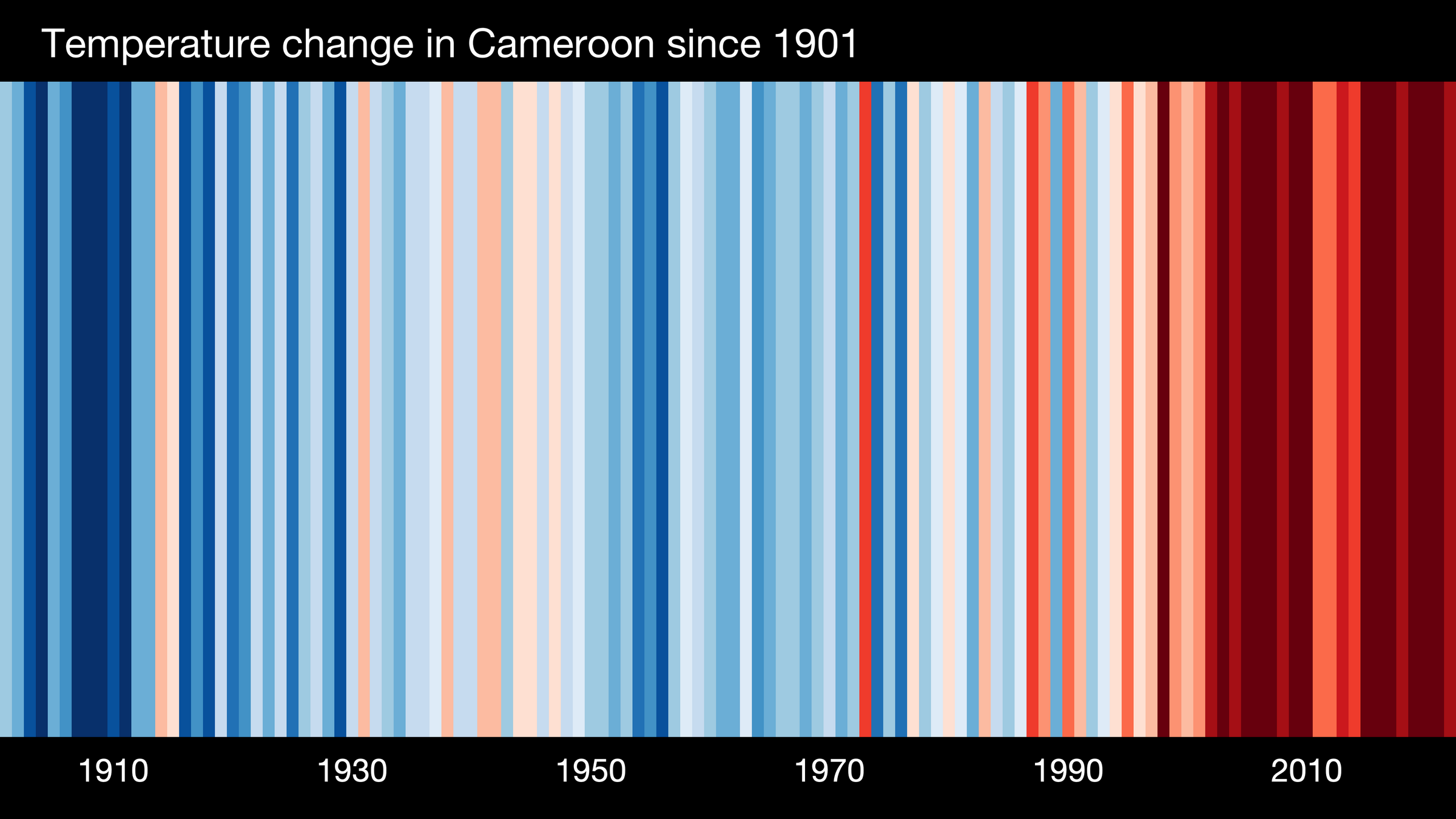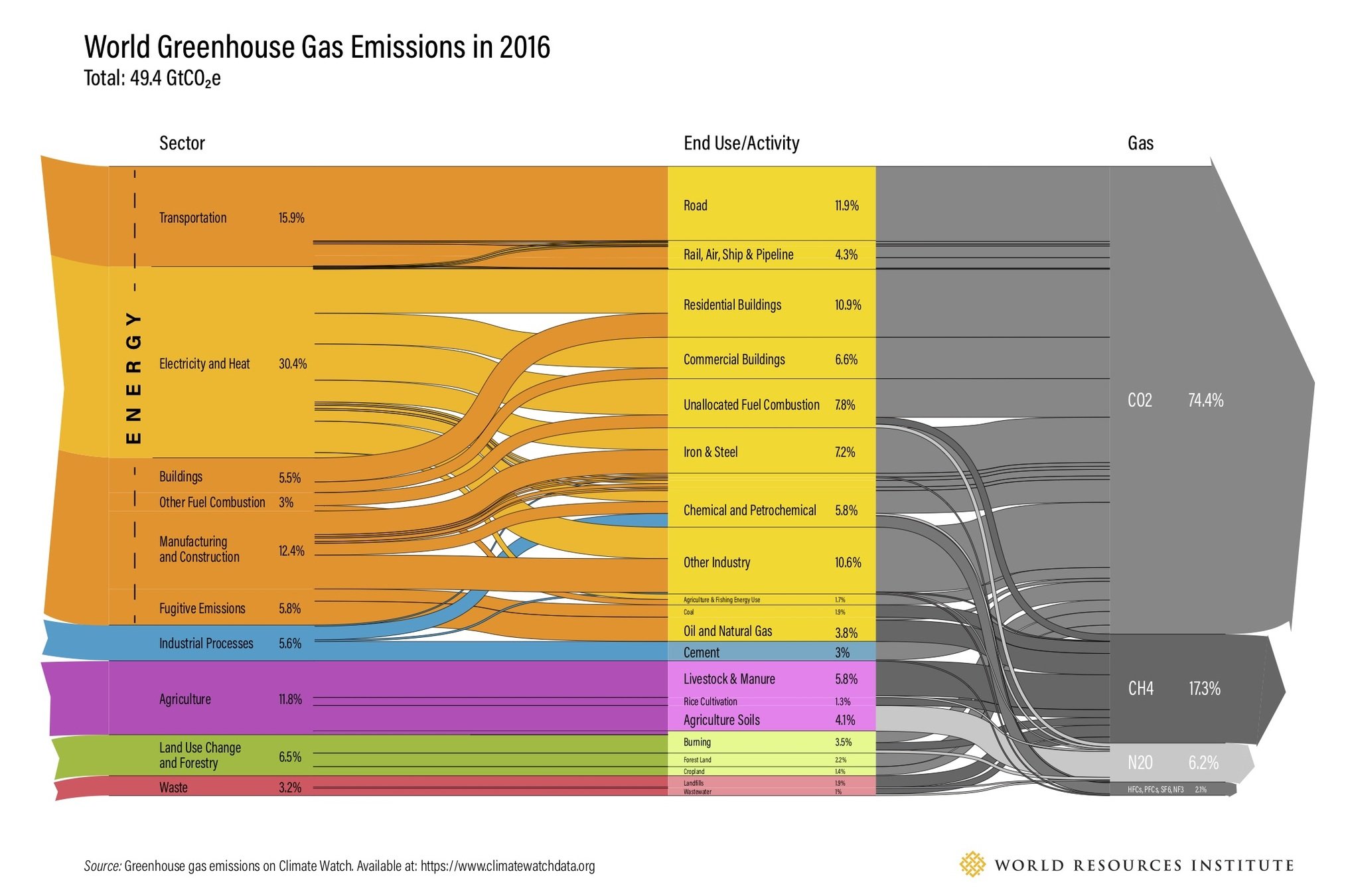Tackling Climate Change
With Machine Learning
Benjamin Akera
Deep Learning IndabaX - Cameroon 🇨🇲
PART 0
WhoAmI ?McGill University | Mila - Quebec AI Inst.
Sunbird AI
Benjamin Akera
Part 1: Climate Change
A Brief Overview
Climate Change
Need net-zero greenhouse gas emissions by 2050 (IPCC 2018)
-
Across energy, transport, buildings., industry, agriculture etc.



How does ML fit into this picture?
Impacts felt globally
Disproportionate impacts on most disadvantaged populations
Takeaways and how to get involved
Part 1
The state of climate Change
Temperature change
Human Activity as a Driving Factor
Approaches to Addressing Climate Action
01 -
02 -
03 -
04 -
05 -
The state of
Climate Change
Has induced major changes in climate
- Climate = "average weather"
- Extreme heatwaves, precipitation, droughts, hurricanes
Earth has already warmed over 1 º C compared to pre-industrial period
Due to Excess greenhouse gas (GHG) -- emissions from human activities
- E.g carbon dioxide, methane, nitrous oxide
The state of
Climate Change
Earth has already warmed over 1 º C compared to pre-industrial period

https://showyourstripes.info/Greenhouse gas Emissions from human activities is a major contributing factor
- E.g carbon dioxide, methane, nitrous oxide

Approaches to Addressing climate Change
Axes of Action
Climate Science: Understanding and predicting climate change
Mitigation: Reducing or preventing greenhouse gas emissions
Adaptation: Responding to the effects of a changing climate
Approaches to Addressing climate Change
Axes of Action
Climate Science: Understanding and predicting climate change
Mitigation: Reducing or preventing greenhouse gas emissions
Adaptation: Responding to the effects of a changing climate
Important Frameworks
Climate Justice: An equity-centered approach to climate change
Co-benefits: Explicitly considering linkages betweeen climate action and other UN Sustainable Development Goals (SDGs)
Climate Change Mitigation
Reducing or preventing GHG Emissions
Sectors
Energy supply
Transportation
Buildings
Industry
Agriculture
Forestry
.
.
.
Approaches to Addressing climate Change
Axes of Action
Climate Science: Understanding and predicting climate change
Mitigation: Reducing or preventing greenhouse gas emissions
Adaptation: Responding to the effects of a changing climate
Important Frameworks
Climate Justice: An equity-centered approach to climate change
Co-benefits: Explicitly considering linkages betweeen climate action and other UN Sustainable Development Goals (SDGs)
Adaptation: Responding to the effects of a changing climate
Rising Temperatures
Changing Rain Patterns
Rising sea levels
Ocean acidification
Climate Impacts
Drougts & Heatwaves
More intense storms & flooding
More Frequent wildfires
Loss of Ecosystem services
Downstream Effects
Biodiversity Loss
Spread of disease vectors & pests
Fig. adapted from Kris SankaranAdaptation: Responding to the effects of a changing climate
How ?
- Measuring and predicting risks
- Risk: Impact X probability
- Strengthening adaptive capacity
- Robustness: Withstanding a range of outcomes with no/minimal impact
- Resilience: Recovering Quickly after impact
Approaches to Addressing climate Change
Axes of Action
Climate Science: Understanding and predicting climate change
Mitigation: Reducing or preventing greenhouse gas emissions
Adaptation: Responding to the effects of a changing climate
Important Frameworks
Climate Justice: An equity-centered approach to climate change
Co-benefits: Explicitly considering linkages betweeen climate action and other UN Sustainable Development Goals (SDGs)
Part 2
Climate Change
Machine Learning
Part 2
Opportunities for ML in climate action
Considerations for Research and Deployment
Is ML a help or a hinderance?
Take Aways and How to get involved
01 -
02 -
03 -
04 -

⚡🔌
🏘️
🏘️
🏘️
🏢
Buildings
Electricity Systems
☁️
⛈️
☀️
Climate Prediction
Industry
Society
Roles for ML in Mitigation, adaptation & Climate Science
01 - Distilling Raw Data into Actionable information
03 - Optimizing Complex Systems
04 - Improving Predictions
02 - Accelerating Scientific Discovery
05 - Approximating Time-intensive simulations
see also: https://www.climatechange.ai/summaries
01 - Distilling Raw Data
Usecase - Glacier Mapping with Satellite Data




Deep Learning & Semantic Segmentation
Accelerated Mapping of Melting Glaciers
01 - Distilling Raw Data
Other Examples
Mapping deforestation and carbon stock [M]
Gathering data on building footprints/heights [M]
Evaluating coastal flood risk [A]

Open buildings John Quinn et al.

02 - Accelerating Scientific Discovery
Role: Suggesting experiments in order to speed up the design process
Relevant ML Areas: Generative Models, Active Learning, Reinforcement Learning, Graph Neural Networks
👨🔬⚗️🧪💊gg
03 - Improving Predictions
Role: Forecasts and timeseries predictions
Relevant ML Areas: Timeseries analysis, Computer Vision, Bayesian methods
Examples
- Nowcasting for Solar/wind power
- Forecasting electricity demand
- Predicting crop yield from satellite imagery

- Bird species distribution Modelling
04 - Optimizing Complex Processes
Role: Improving efficient operation of complex, automated systems
Relevant ML Areas: Optimization, Control, Reinforcement Learning
Examples
- Controlling heating/cooling systems
- Optimizing rail and multimodel transport
- Demand response in electrical grids
05 - Approximating simulations
Role: Accelerating time-intensive, often physics-based simulations
Relevant ML Areas: physics informed ML, Computer Vision, Interpretability, Causal ML
Examples
- Superresolution of predictions from climate models
- Simulating portions of car aerodynamics
- Speeding up planning models for electric grids
Roles for ML in Mitigation, adaptation & Climate Science
01 - Distilling Raw Data into Actionable information
03 - Optimizing Complex Systems
04 - Improving Predictions
02 - Accelerating Scientific Discovery
05 - Approximating Time-intensive simulations
see also: https://www.climatechange.ai/summaries
Recap
ML is not a silver bullet
High-impact applications are not always flashy
Interdisciplinary collaboration is key
- Scoping the right problems
Sophisticated algorithms can be required but aren't always
Equity Consideration
Key Considerations
- Incorporating relevant domain information
- Sharpening pathways to impact
- Empowering diverse stakeholders
- Selecting and prioritizing problems
- Ensuring data is representative
Sophisticated algorithms can be required but aren't always
Opportunities for Innovation
Any innovations should be shaped by needs of the relevant applications
Physics/Engineering constraits or robustness guarantees
Interpretability or causality
Uncertainty quantification
Generalization e.g across geographies, under non-stationarity, or with limited data
Pathways to Impact
Domain identification
Project Scoping
Development
Analysis
Deployment
Other tools
Dataset/Env
ML
Pathways to Impact
Domain identification
Project Scoping
Development
Analysis
Deployment
Other tools
Dataset/Env
ML
Consider the full pathway to impact, including
Data, simulators, Evaluation metrics
Responsible AI & Climate considerations
Stakeholder engagement
Takeaways and how to get involved
Conclusion & Recap
Introduction to climate change
Opportunities for ML in climate action
Considerations for research and deployment
Climatechangeai.org
Credit to Dr. David Rolnick, Dr. Priya Donti & CCAI from whom key points in this presentation are derived.Thank You !
Questions:
akeraben@gmail.com
🤗